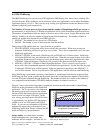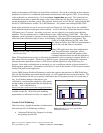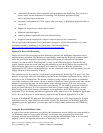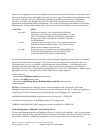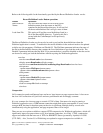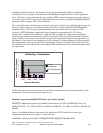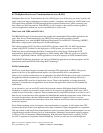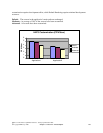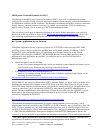
Refer to the following table for the functionality provided by the Record Definition Loader servlet.
This option will load the record definitions listed in a
file in the RecordJSPs directory. Typically this file is
created with the CacheDumper servlet previously
described.
Load from File
This will cause the loader servlet to infer record
definition names from the names or the JSP's
contained in the RecordJsps directory. It will not find
all the record definitions but it will get most of them.
Infer from JSP
Names
OperationButton
Record Definition Loader Button operations
The Record Definition Loader servlet can also be used to pre-load the bean definitions when the
Webfaced application is started. To enable this the servlet definition in the web.xml needs to be updated
to define two init parameters: FileName and DisableUI. The FileName parameter indicates the name of
the file in the RecordJSPs directory that contains the list of definitions to pre-load the cache with. The
DisableUI parameter indicates that the Web UI (as presented above) would be disabled so that the servlet
can be used to safely pre-load the definitions without exposing the Webfaced application.
<servlet>
<servlet-name>BeanLoader</servlet-name>
<display-name>BeanLoader</display-name>
<servlet-class>com.ibm.etools.iseries.webfacing.diags.BeanLoader</servlet-class>
<init-param>
<param-name>FileName</param-name>
<param-value>cachedbeannames.lst</param-value>
</init-param>
<init-param>
<param-name>DisableUI</param-name>
<param-value>true</param-value>
</init-param>
<load-on-startup>10</load-on-startup>
</servlet>
Compression
LAN connection speeds and Internet hops can have a large impact on page response times. A fast server
but slow LAN connection will yield slow end-user performance and an unhappy customer.
It is very common for a browser page to contain 15-75K of data. Customers who may be running a
Webfaced application over a 256K internet connection might find results unacceptable. If every screen
averages 60K, the time for that data spent on the wire is significant. Multiply that by several users
simultaneously using the application, and page response times will be longer.
There are now two options available to support HTTP compression for Webfaced applications, which will
significantly improve response times over a slow internet connection. As of July 1, 2003, compression
support was added with the latest set of PTFs for IBM HTTP Server (powered by Apache) for i5/OS
(5722-DG1). Also, Version 5.0 of Webfacing was updated to support compression available in
IBM i 6.1 Performance Capabilities Reference - January/April/October 2008
© Copyright IBM Corp. 2008 Chapter 6 - Web Server and WebSphere 113





